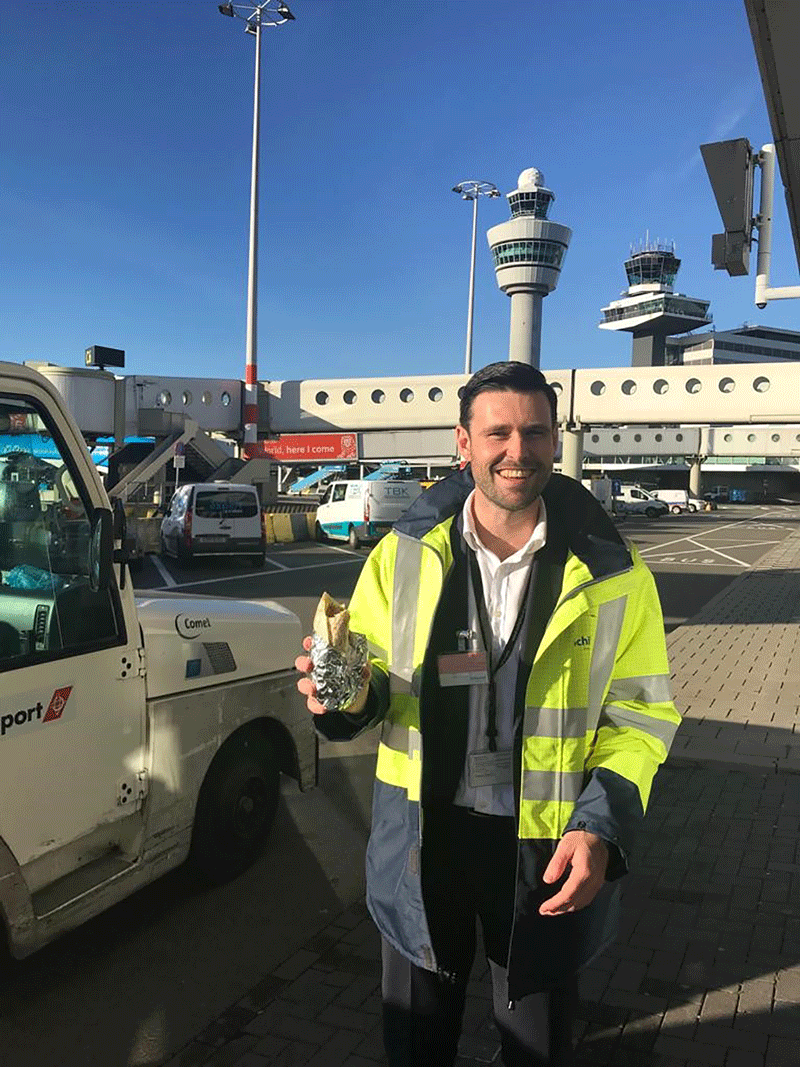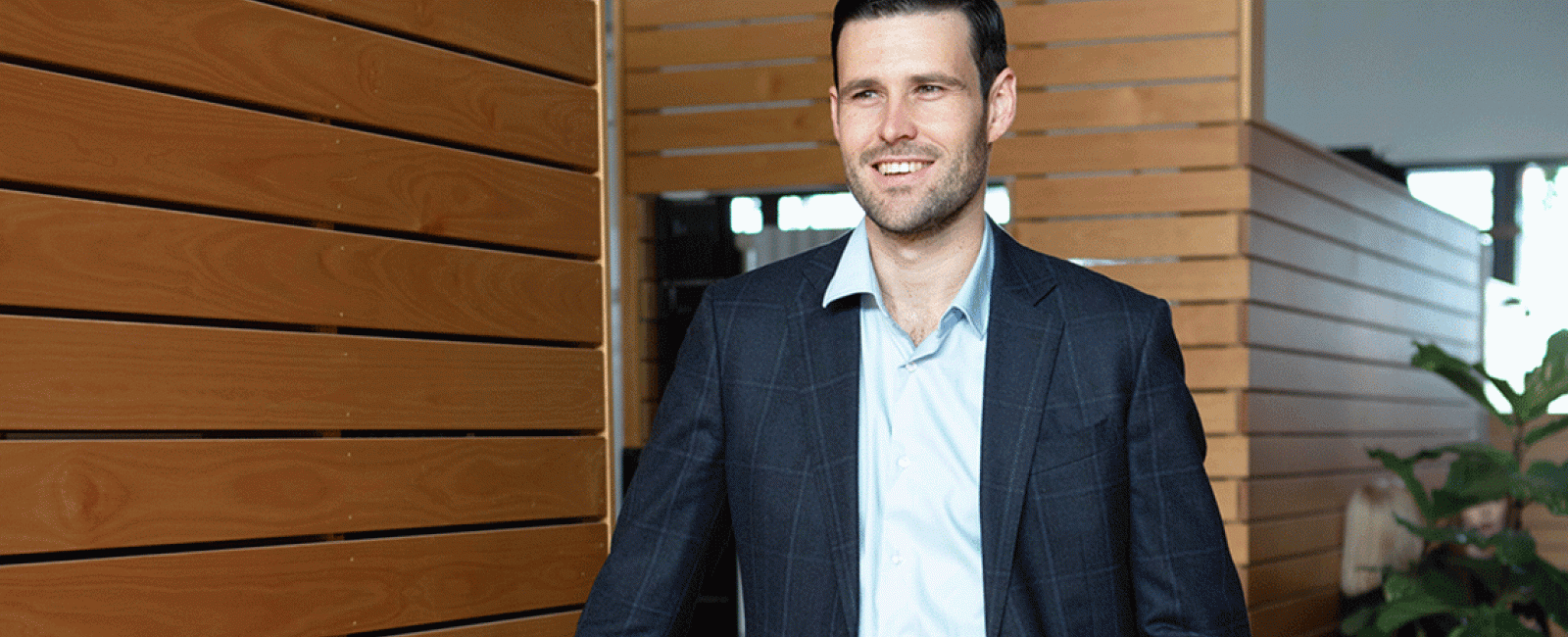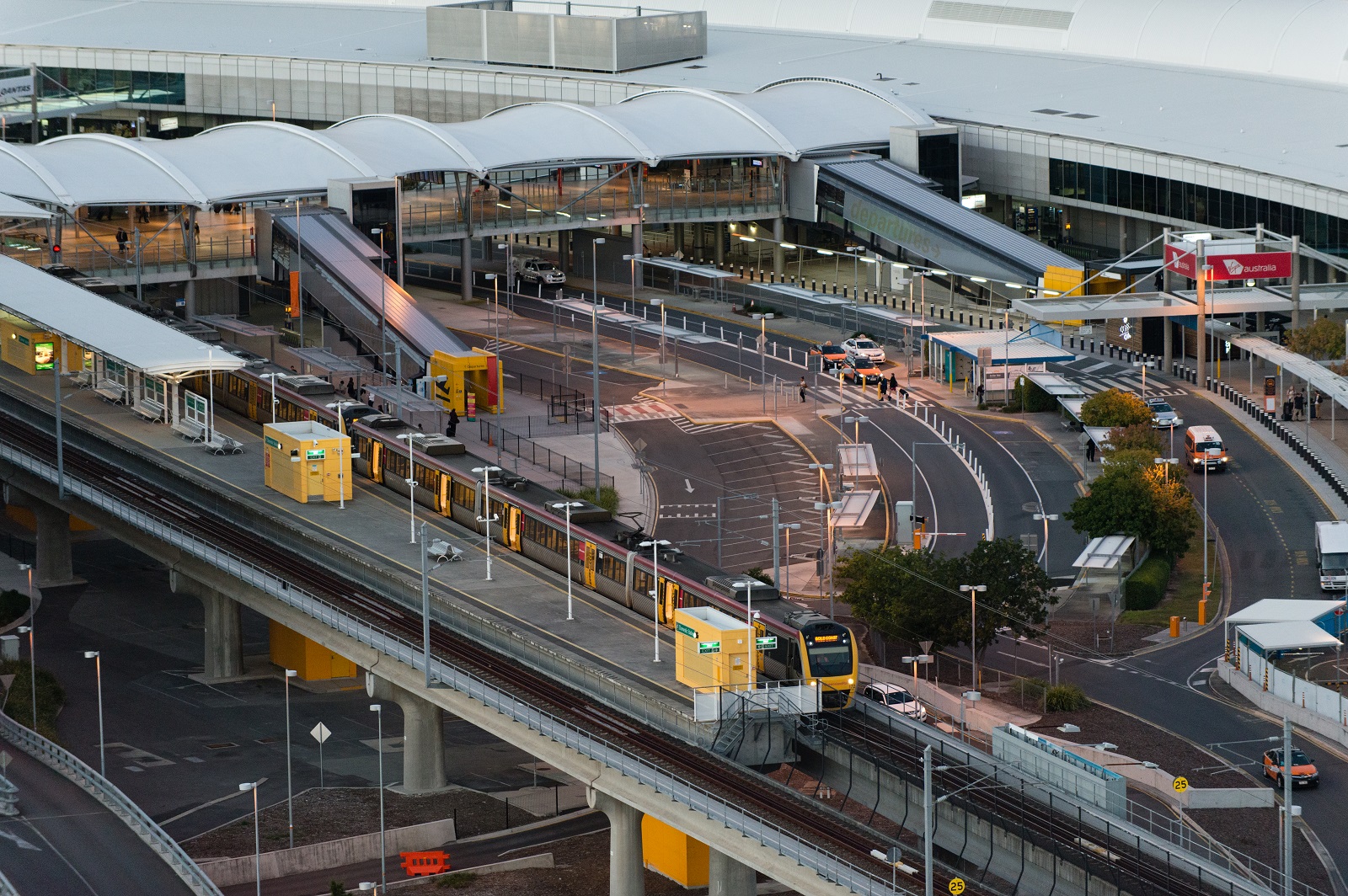
In a world where most of us struggle to plan our weekly lunches, it should come as no surprise that there is a niche skill set required to be an airport planner. After all, shaping the future of Brisbane Airport, which will accommodate 48,000 jobs and 50 million annual passengers by 2045, is no easy task.
A good airport planner not only knows their stakeholders, but they also have a solid understanding of what will and won’t work within their community. They are problem-solvers, strategic thinkers, and solid communicators that combine data with land-use planning principles to inform development outcomes. A delicate balance between creative and pragmatic.
For David Oatley, he has all the above in spades and some. Squashing the stereotypes often associated with Millennials, David has fought his transient tendencies and been with BAC for nearly six years, has a bachelor’s degree and two masters under his belt, is a board member for the Infrastructure Association of Queensland, and has remained committed to his chosen career path of planning. On top of all that, he was recently named by the Airport Councils International (ACI) as ACI Asia-Pacific’s Young Executive of the Year 2021.
His resume is nearly as impressive as my phone bill!
For a large part of his career, David has worked as a planner within major supply-chain infrastructure including the Port of Brisbane and North Queensland Bulk Ports Corporation, and he openly admits to the fact that a ‘sea view’ was the major draw card for working at the ports.
“At the port, we would manage high volume, but low value commodities. At airports, the paradigm is inverted. We facilitate high value, but low volume movements. The attraction of joining Brisbane Airport Corporation was the chance to have a much closer relationship with the community and the opportunity to leave them with a legacy.”
'His role at BAC initially started out with a focus on facilitating the landside development across Brisbane Airport, working with the Property Team and looking at the statutory planning associated with property development. Things like Major Development Plans and the creation of strategic policy documents, such as the Landscape Setting Strategy, were his bread and butter.
His role evolved to be centred on more medium- to long-term strategic planning, with a real focus on the connectivity of the airport and what our operations will look like in the next twenty to forty years. As the Airport Planning Manager, he is responsible for overseeing the land use, transport, and utilities strategies for Brisbane Airport.
It is often said that a vision without a strategy will remain an illusion, and it seems to be a quote that directly aligns with David’s planning ethos.
“There are many different aspects to airport planning, but it all starts with a vision, and we endeavour to translate that vision into a plan. The ultimate product is a strategic plan that has a long-term focus and intends to integrate and complement all of the airport’s aspirations … it is making sure that everything works in harmony.
“Once we have that strategic plan established, we then go into tactical planning, sometimes referred to as development planning. This is where we take the conceptual layouts and advance the design, to make sure that they actually work. Sometimes strategic planners can be a bit too ambitious and when we start to test the ideas with the engineers and civil designers, they don’t quite work. So, that’s the relationship that the strategic planners have with the development team in this business.”
While focussing on the mid- to longer-term future of Brisbane Airport, David has reflected and taken stock of Brisbane Airport’s response to the COVID-19 pandemic somehow found the time to submit an award-winning research paper to ACI Asia-Pacific.
“It is nice to be recognised by ACI Asia-Pacific, but I don’t think of it as a personal accomplishment. I think it is actually a reflection of Brisbane Airport Corporation in its entirety. In preparing the paper, I pestered almost half of the organisation. All I did was take the thoughts and good work that is happening within Brisbane Airport Corporation and reflected it in a document that was ultimately shared with ACI.”
David’s paper looked at passenger facilitation under pandemic and its legacy to airport planning, looking at three types of interventions for airports that seek to reduce the risk of transmission of COVID-19 and compel consumers to return to flying.
“When we reflect on what was happening throughout the pandemic, there would be people that were risk-seeking and they were happy to go into crowded spaces, but we also had people that were risk-averse and reluctant to leave their home. Everyone’s mental health was impacted differently, and we learnt about its fragility. So, when we think about strategic planning for the airport, we need to consider all the members of our community and how we can accommodate their needs through our day-to-day operations.
“The research paper focused on the group of people who sit between the risk-seeking and the risk-adverse – the group that will travel if they feel safe. The paper spoke about this group of people as the ‘reluctant middle’ and sought ways to encourage them to get back into the air. Our job in the aviation industry, as an airport, is to provide an environment that is and feels safe.”
For David, one of the lasting legacies COVID-19 has had on airport planning is the new-found appreciation of flexibility. He strongly believes that any investment made into infrastructure should consider its ability to be repurposed on a medium- and longer-term basis.
From an airport point of view, that means further investments in technology, dynamic signage, versatile infrastructure, and any other asset that allows for change depending on need and demands at a point in time.
“We also need to consider opportunities to make more things contactless, because that was the key theme under the pandemic. The need to provide a safe environment for not just passengers but for all members of the community - this includes airport, retail and airline staff.”
In true pragmatic fashion, David concedes that COVID-19 will not be the last pandemic Brisbane Airport will face. In the immediate future, he sees his and the wider airport’s priority as understanding how to better accommodate the community if, and when, the next pandemic comes.
“We know how heavily reliant many small businesses are on travellers and tourists. Our role in the ecosystem is to find ways to more effectively facilitate travel under future pandemics.”
But don’t let his sensible approach to airport planning during a pandemic distract you into thinking it is all doom and gloom. Far from it. Brisbane Airport has remained open throughout the pandemic and is stronger than ever, always ready to support the many industries reliant on 24/7 connectivity across Australia and the globe.
“I am proud of what has been achieved throughout the COVID-19 pandemic and the way in which we as an airport have adapted to serve the needs of all members of our community. It is an honour to be part of the team and I honestly believe the future for Brisbane Airport is very, very bright.”



